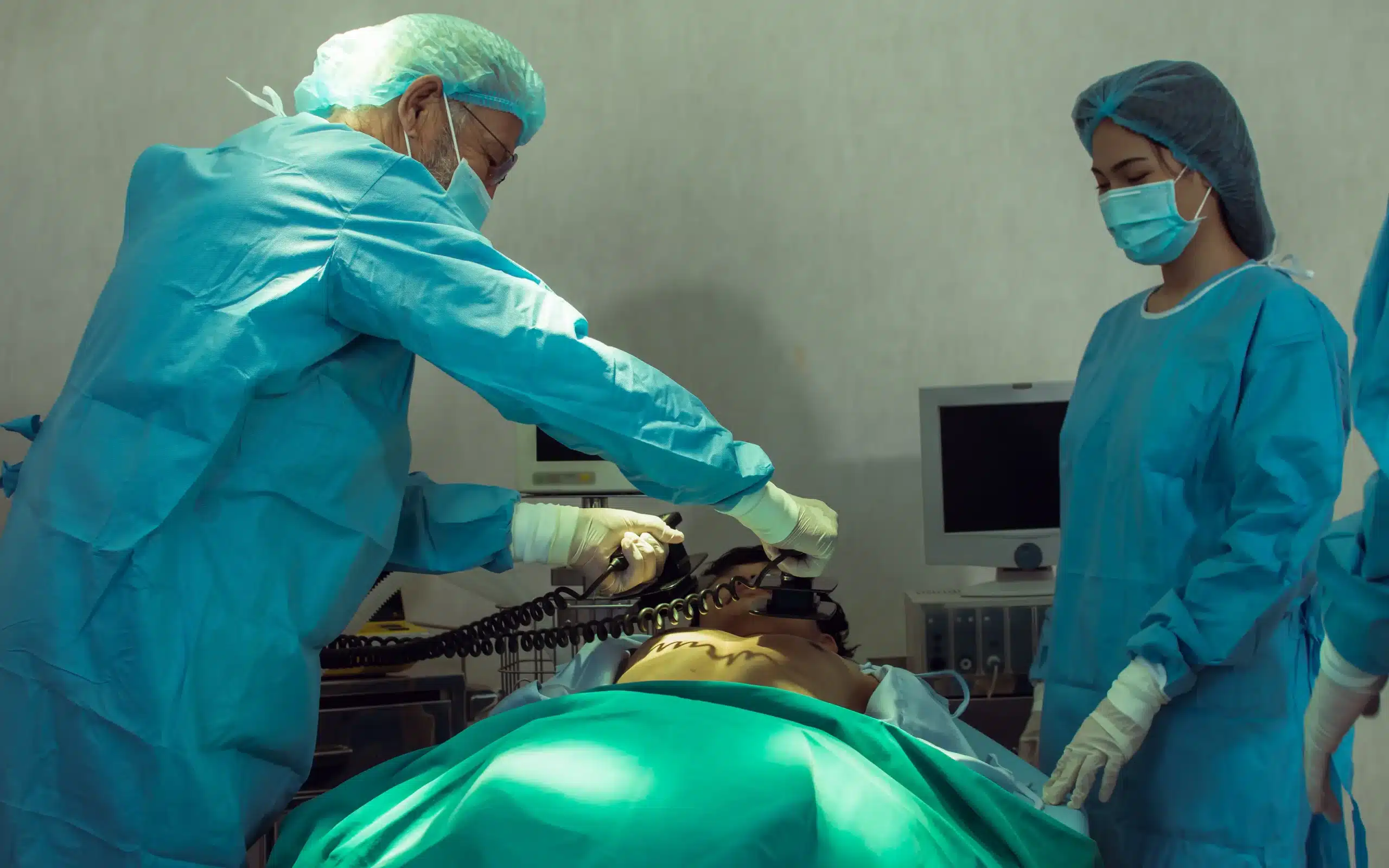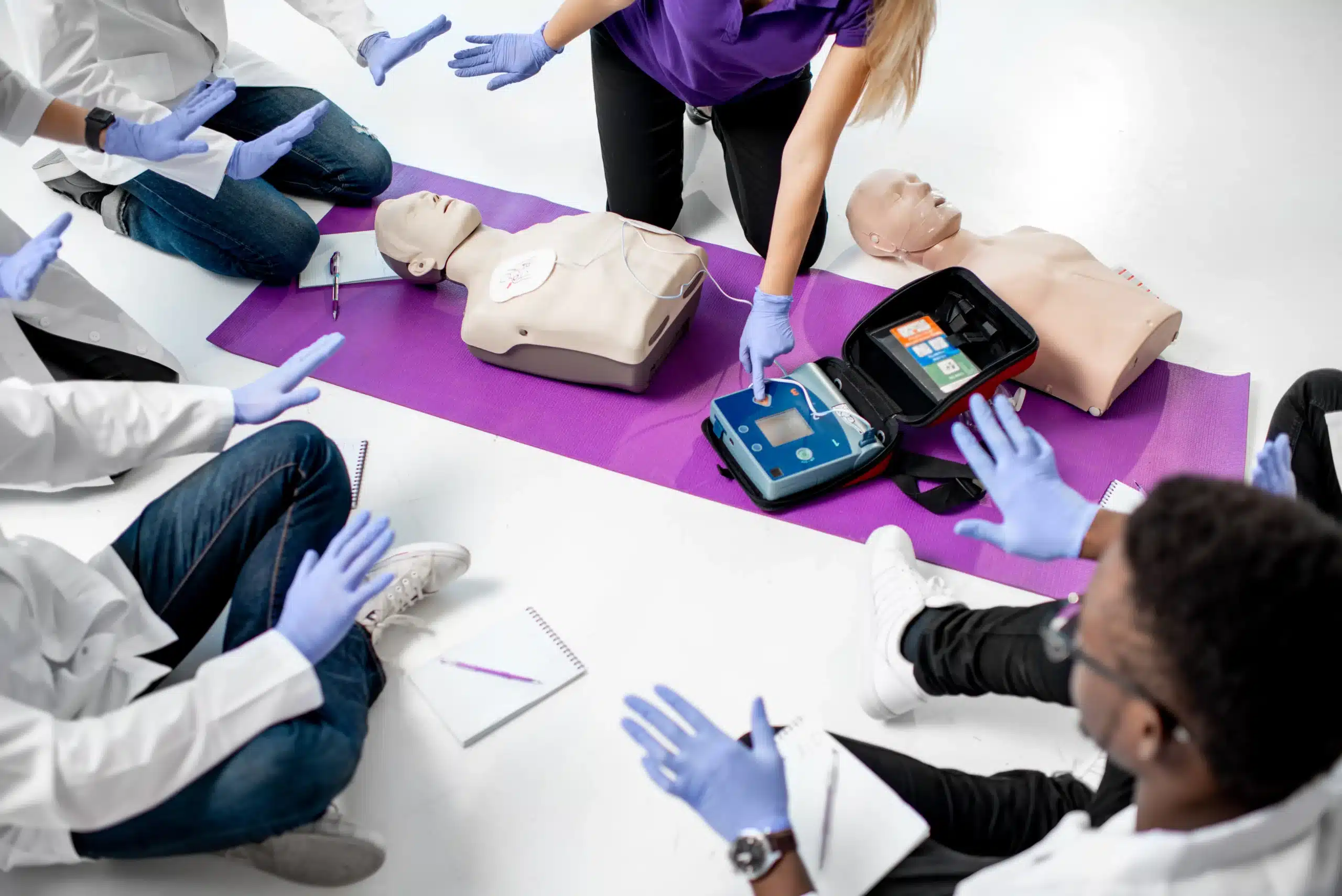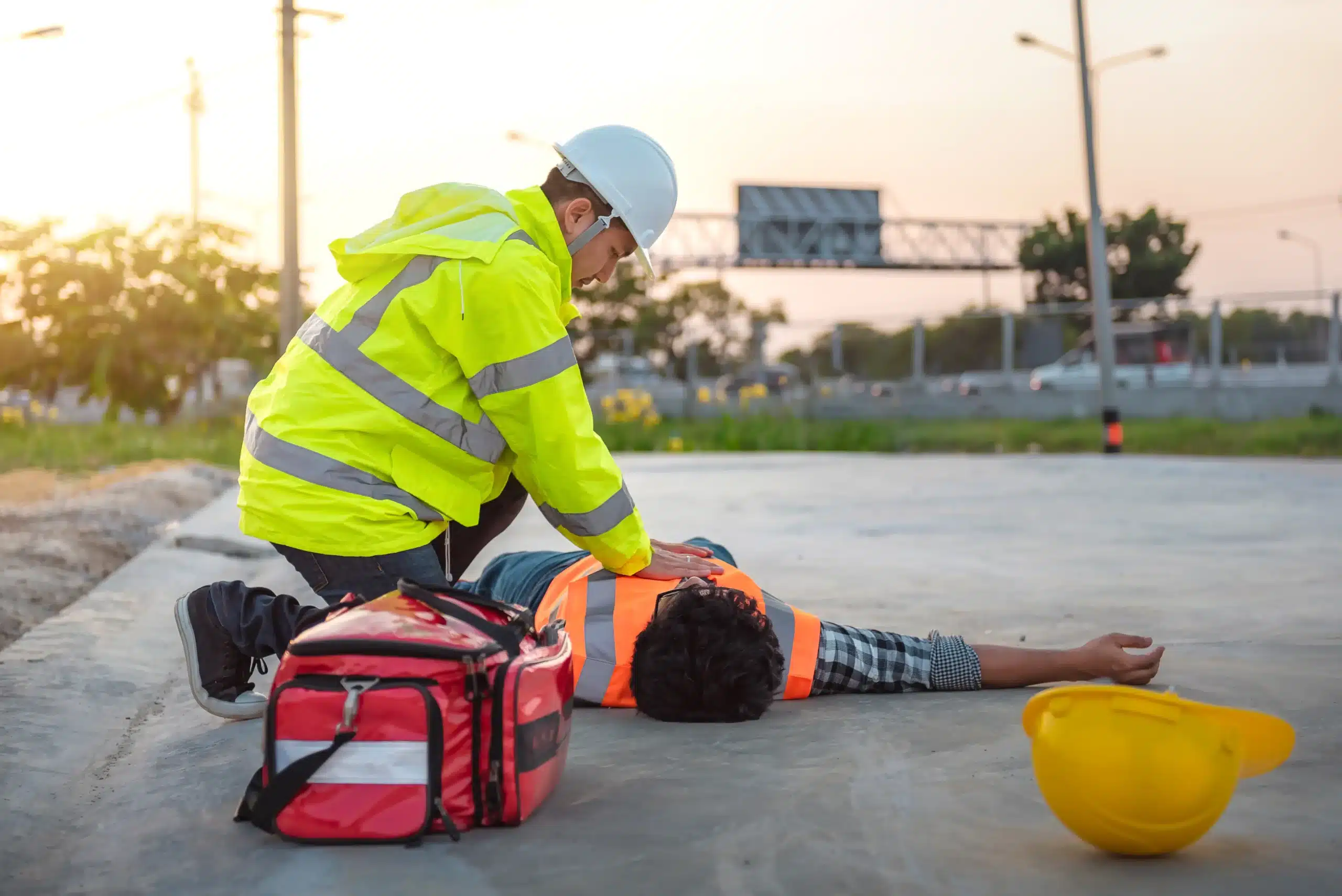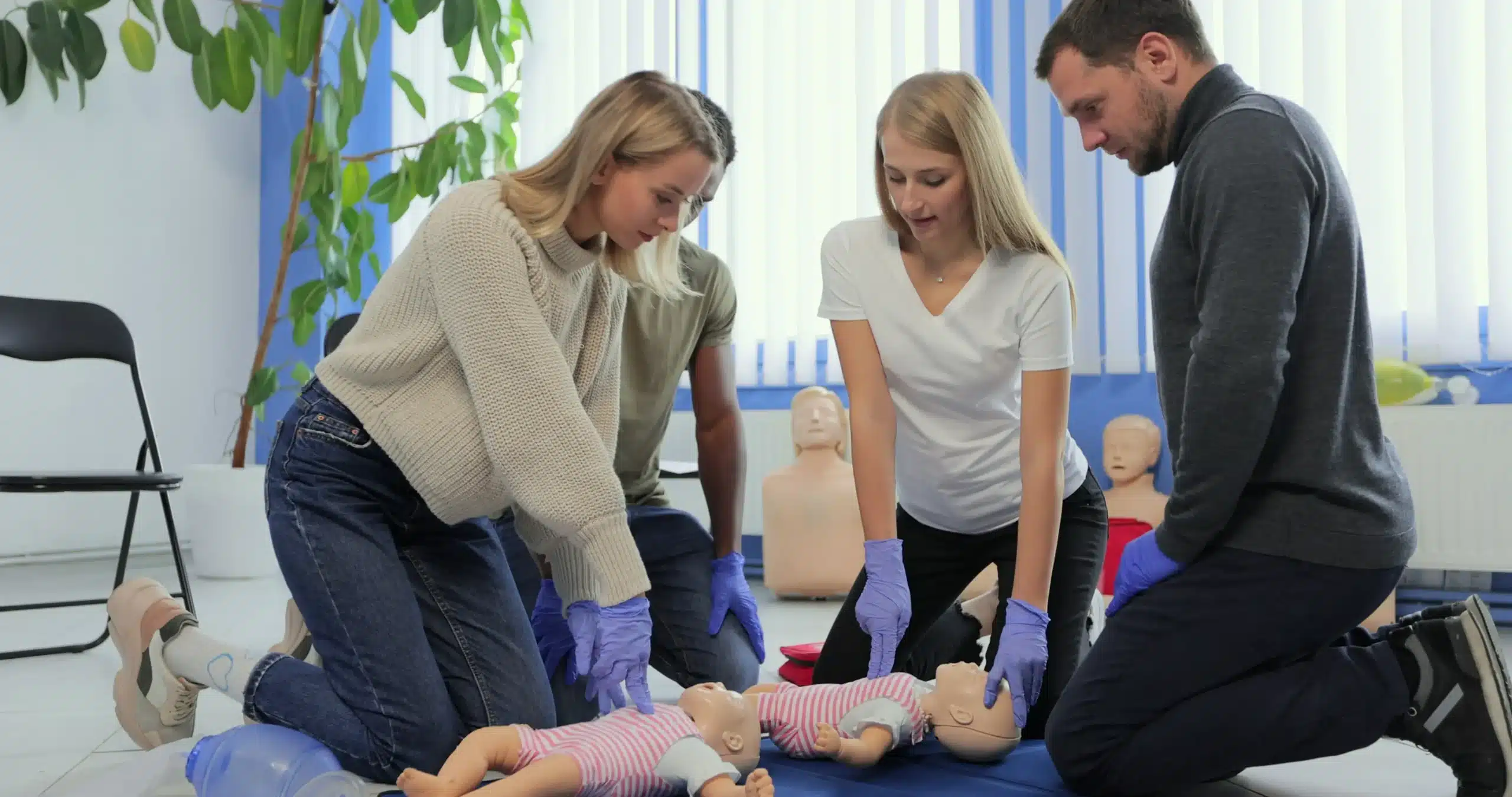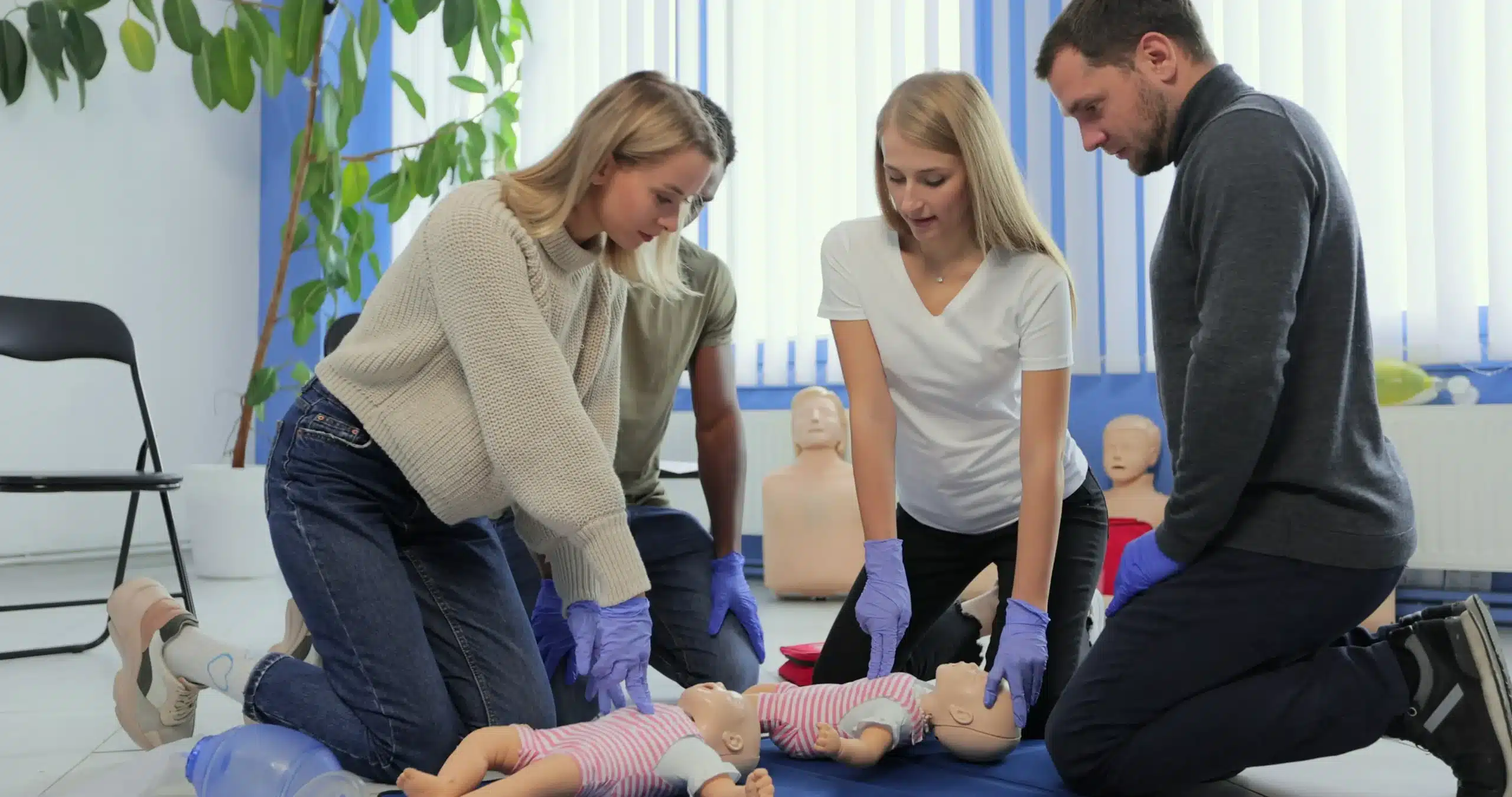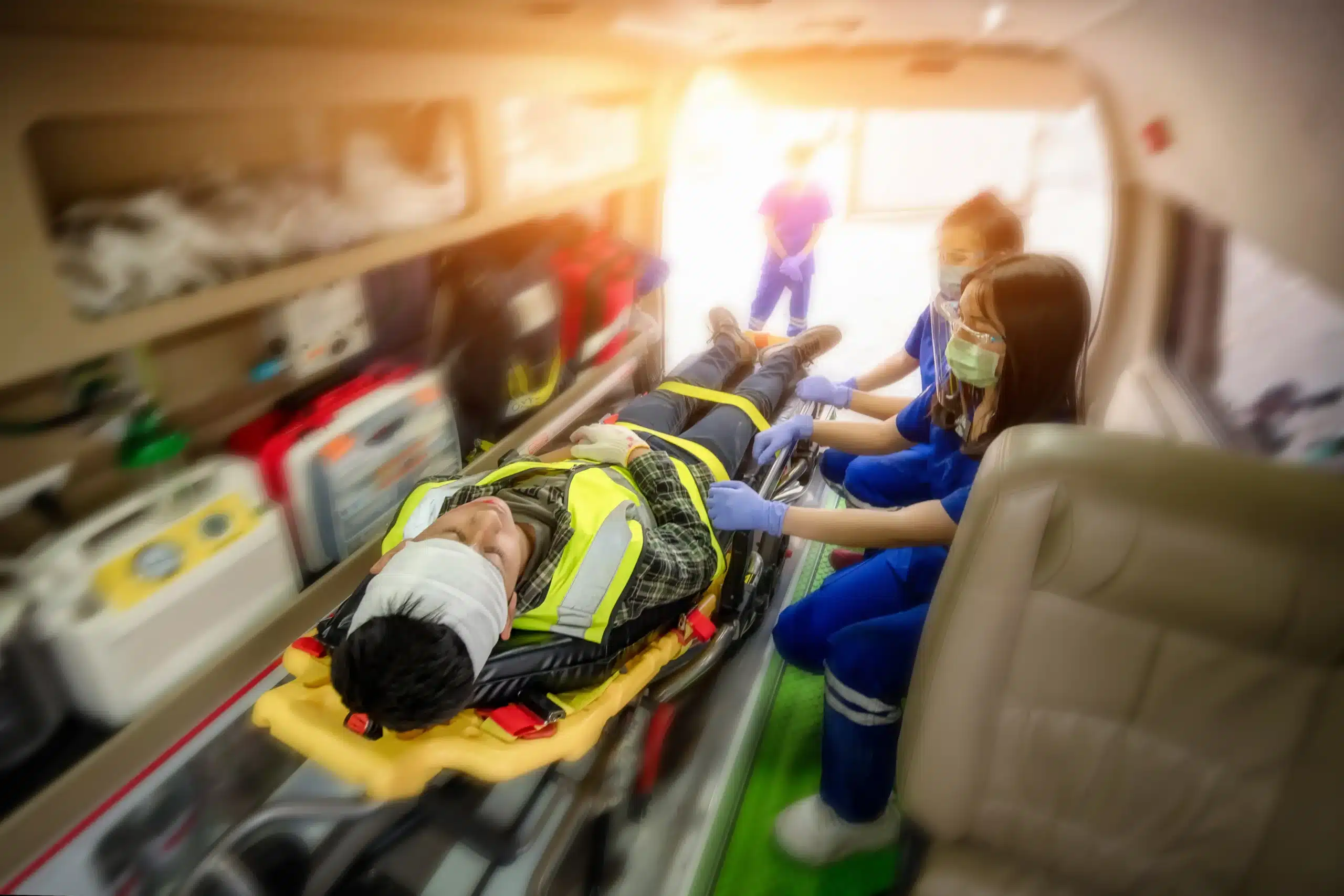In Alameda, being prepared for medical emergencies can be truly empowering. BLS certification in Alameda provides you with the knowledge and skills to respond effectively in critical situations, making a real difference in your community. This guide will walk you through the process of obtaining and maintaining your BLS certification in Alameda. We’ll cover everything from finding reputable training providers and understanding the costs to choosing the right course format and debunking common misconceptions. Whether you’re a healthcare provider, a student, or simply a concerned citizen, this guide will equip you with the information you need to confidently pursue BLS certification.
Key Takeaways
- BLS certification empowers you to save lives: These skills are valuable for everyone, not just healthcare professionals. Find a course format—in-person, blended, or online—that suits your needs and schedule.
- Select a reputable BLS training provider: Look for certifications from trusted organizations like the American Heart Association or American Red Cross. Consider factors like cost, schedule, instructor experience, and course content.
- Stay current with your BLS skills: Regular practice and renewal are essential for maintaining proficiency. Keep up with the latest guidelines and explore continuing education to refine your life-saving techniques.
What is BLS Certification and Why Does it Matter in Alameda?
Basic Life Support (BLS) certification gives you the skills to handle medical emergencies. Through BLS training, you’ll learn how to perform high-quality CPR, use an AED, and help someone who is choking. These skills are critical for healthcare providers like doctors, nurses, paramedics, and EMTs, but they’re valuable for anyone who might one day need to respond to a crisis. EMR Safety and Health offers further details on BLS requirements for healthcare professionals.
BLS certification is especially important in Alameda. Our community prioritizes health and safety, and BLS-trained individuals are key to responding effectively to emergencies. When you’re certified, you can provide vital care while waiting for professional help to arrive, potentially making all the difference. This guide highlights the impact of BLS training in Alameda. Knowing you have these skills not only helps you act quickly but also builds your confidence to handle critical situations. BLS training covers essential, potentially life-saving techniques, making it a true asset for anyone in healthcare or community service. You can learn more about the benefits of BLS training. If you’re in Alameda, Oakland, or Berkeley, check out the BLS certification courses offered by Safety Training Seminars.
Find Top BLS Certification Providers in Alameda
Finding the right BLS certification provider is key to receiving high-quality training. Here are a few reputable options to explore in Alameda:
Safety Training Seminars
Safety Training Seminars offers various certifications, including BLS, ACLS, PALS, and First Aid. As an American Heart Association (AHA) Training Center, their courses adhere to the latest AHA guidelines. They offer daily classes, making scheduling convenient. For those specifically seeking training in Alameda, you can find more information on their Alameda CPR classes. Safety Training Seminars also offers a low price guarantee and group discounts.
CPR Education
CPR Education provides a range of CPR and first aid courses in Alameda. They’re known for their experienced instructors and flexible scheduling. Explore their Alameda class options to find a course that fits your needs.
American Heart Association Training Centers
The American Heart Association (AHA) sets the standard for BLS training. Finding an AHA Training Center ensures you receive comprehensive, up-to-date instruction. These courses are crucial for healthcare providers and other professionals who need to respond to emergencies effectively. You can find an AHA Training Center near you through the American Red Cross website.
American Red Cross
The American Red Cross is another trusted provider of BLS certification courses in Alameda and throughout California. They offer both initial certification and renewal courses, catering to individuals at all career stages. Their training is particularly relevant for those pursuing or working in first responder roles. Find a Red Cross BLS course in your area.
Alameda CPR Classes
Alameda CPR Classes focuses on hands-on, in-person BLS training. Their blended learning approach combines online modules with practical skill sessions, providing a flexible and effective way to learn life-saving techniques. This format is especially helpful for busy professionals. Check out their BLS training guide for a deeper dive into their program.
BLS Certification Costs in Alameda
Knowing the price range for BLS certification in Alameda helps you budget effectively. This section breaks down average costs, potential discounts, and the long-term value of this training.
Average Price Range
BLS certification courses in Alameda typically range in price, often reflecting factors like the level of instruction, course materials, and the provider’s reputation. You’ll find many providers offering competitive rates, so comparison shopping is a good idea. Safety Training Seminars offers American Heart Association courses, including BLS, CPR, ACLS, PALS, and First Aid, across many Northern California locations, including Alameda. Check their website for the latest pricing.
Group Discounts and Special Offers
If you’re organizing training for a group, such as coworkers or a community organization, look into group discounts. Many training centers, including Safety Training Seminars, offer on-site group training for various certifications. This can be a cost-effective way to streamline training for everyone.
Low-Price Guarantees
When choosing a provider, see if they offer a low-price guarantee. This gives you confidence that you’re getting good value for your training. Safety Training Seminars provides a low-price guarantee in Alameda County, demonstrating their commitment to affordability.
Return on Investment for Professionals
Consider BLS certification a professional investment. While there’s an initial cost, the return can be significant, especially in healthcare. BLS training strengthens your skills and can create opportunities for career growth. It shows your dedication to patient care and can significantly improve patient outcomes. Even outside of healthcare, BLS certification can make you a more competitive candidate in many fields.
Find BLS Certification Course Formats and Schedules
Finding the right BLS certification course often comes down to format and schedule. Thankfully, there are several options available in Alameda, so you can choose what works best for your learning style and availability.
In-Person Training
In-person training remains a popular choice, offering a hands-on learning environment with direct interaction with instructors and other students. Safety Training Seminars offers BLS certification courses daily in Alameda, making it easy to find a class that fits your schedule. This format is ideal for those who thrive in a traditional classroom setting and value face-to-face instruction.
Online and Hybrid Courses
For those who prefer a more flexible approach, many BLS training courses now offer online and hybrid learning options. These blended learning formats combine online coursework with in-person skills practice. This allows you to complete the theoretical portion at your own pace before attending a hands-on session to demonstrate your skills. This is particularly helpful for busy professionals or those with demanding schedules.
Flexible Scheduling
Whether you choose in-person or hybrid learning, flexibility is key. Many providers understand the need for adaptable scheduling and offer classes daily, evenings, and weekends. Training can also be tailored to fit your specific needs, especially for groups. For example, Safety Training Seminars offers on-site training, bringing the course directly to your workplace. This is a convenient option for businesses looking to certify multiple employees at once. Check with your chosen provider about group discounts, which can often make training more affordable.
RQI Program
Healthcare professionals looking to maintain their BLS certification should consider the Resuscitation Quality Improvement (RQI) program. This program offers a streamlined approach to BLS, ACLS, and PALS recertification, ensuring you stay up-to-date with the latest guidelines. RQI uses innovative technology and personalized learning to help healthcare providers maintain their skills and knowledge efficiently.
Get BLS Certified: Enrollment to Certification
Getting your BLS certification is a straightforward process. Here’s a step-by-step guide to help you from enrollment to certification:
Prerequisites
There are no formal prerequisites for BLS certification. This means anyone, from healthcare providers to concerned citizens, can enroll in a BLS course. BLS certification focuses on core life-saving skills applicable in various emergencies. It equips you with the knowledge and practical skills to respond effectively to life-threatening situations like cardiac arrest and respiratory distress.
Course Duration and Content
BLS training courses often use a blended learning approach, combining online coursework with in-person skills practice. This flexible format accommodates busy schedules. Instructor-led BLS courses typically require 4–5 hours of classroom time. Blended learning courses involve about 1–2 hours of online learning, followed by 2–3 hours of hands-on practice with a certified instructor. You’ll cover essential techniques like CPR, using an automated external defibrillator (AED), and relieving choking. Organizations like the American Red Cross offer this combined learning format. You’ll learn to recognize and respond to life-threatening emergencies, providing crucial care until professional help arrives.
Practical Exam and Skills Assessment
Your BLS training culminates in a practical exam and skills assessment. This hands-on evaluation typically involves demonstrating your learned skills on a voice-assisted manikin (VAM). While an instructor won’t be physically present during the VAM test, support is available by phone if needed. This approach ensures a standardized and objective assessment of your abilities. You’ll apply your knowledge and demonstrate proficiency in the techniques learned during the course.
Certification Validity and Renewal
BLS certification is valid for two years. Renewal courses are necessary to stay current with the latest guidelines and maintain your certification. Don’t let your certification lapse. Regular renewal ensures your skills remain sharp and you can confidently respond to emergencies. The American Red Cross offers various renewal courses throughout California. It’s a common misconception that BLS certification is a one-time achievement. Staying certified demonstrates your ongoing commitment to providing high-quality care. Regularly refreshing your skills ensures you’re prepared to handle emergencies effectively.
Benefits of BLS Certification for Alameda Professionals
BLS certification offers numerous advantages for professionals in Alameda, across various industries and career stages. Whether you’re a seasoned healthcare provider or just starting out, BLS training equips you with essential lifesaving skills and knowledge.
Improve Emergency Response Skills
BLS certification empowers you to respond effectively during medical emergencies. You’ll learn to perform high-quality CPR, use an automated external defibrillator (AED), and relieve choking. These skills are invaluable in any setting, from hospitals and clinics to schools and community centers. BLS training emphasizes speed and efficiency in delivering life-saving care.
Increase Employability
In Alameda’s competitive job market, BLS certification can give you an edge. Many healthcare employers require BLS certification. Holding a current BLS certification demonstrates your commitment to patient safety and preparedness for critical situations, making you a more desirable candidate and opening doors to more career opportunities. For affordable options, check out CPR Classes Oakland’s low price guarantee.
Meet Job Requirements
For many professions in Alameda, especially in healthcare and public safety, BLS certification is a requirement. Meeting this requirement ensures you comply with industry standards and regulations, allowing you to practice legally and ethically. The American Red Cross emphasizes BLS as a foundational program for these fields.
Build Confidence in Crises
Knowing you can respond effectively during a medical emergency builds confidence and reduces anxiety in high-pressure situations. BLS training provides the knowledge and practice to remain calm and take decisive action when it matters most. This confidence translates to better patient outcomes and a greater sense of control for the responder. Consider group discounts if you’re training with colleagues.
Make a Community Impact
BLS-certified professionals contribute to a safer and more resilient community in Alameda. These skills make you a valuable asset, capable of providing immediate assistance at work, at home, or in the community. Learning BLS isn’t just about individual preparedness; it’s about building a network of skilled responders.
Choose the Right BLS Certification Course in Alameda
Finding the right BLS certification course is crucial for your career and your confidence in emergencies. With several options in Alameda, consider these key factors before enrolling.
Factors to Consider
Think about your learning style and schedule. Many BLS training courses now use a blended learning format, combining online learning with hands-on skill practice. This offers flexibility for busy professionals. If you prefer a traditional classroom, ensure the schedule works for you. Also, consider the location and accessibility. Safety Training Seminars offers various course formats to fit your needs.
Compare Provider Credentials
Not all BLS certifications are equal. Look for reputable organizations like the American Heart Association (AHA). Safety Training Seminars offers AHA-certified courses in Alameda, including CPR, BLS, ACLS, PALS, and First Aid. Verify the credentials of any training provider to ensure the certification meets industry standards.
Evaluate Training Materials
Up-to-date materials are essential for learning the latest BLS techniques. Check if the curriculum aligns with current guidelines, such as those from the American Red Cross. High-quality materials should include comprehensive resources and opportunities for practice.
Assess Instructor Expertise
Experienced instructors can significantly impact your learning. Inquire about their qualifications, experience, and teaching style. Instructor-led courses often provide personalized feedback, which can be invaluable. Look for instructors passionate about BLS and dedicated to student success. Red Cross BLS training often highlights instructor qualifications.
Common BLS Certification Misconceptions
Let’s clear up some common misunderstandings about BLS certification. These misconceptions can prevent people from getting this life-saving training.
“Only for Healthcare Professionals”
This is a big one. While BLS certification is essential for healthcare providers, it’s incredibly valuable for anyone. BLS equips you with the skills to handle emergencies like choking or cardiac arrest. Knowing how to use an AED, perform CPR, and manage someone’s airway can make all the difference, no matter where you are. These skills can be crucial in various emergency situations, not just in healthcare settings. Learn more about the importance of BLS.
“Too Basic to Be Useful”
Some people think BLS is too simple to be effective. That’s just not true. BLS training gives you the foundational knowledge and confidence to respond quickly and effectively in a crisis. Those first few minutes of an emergency are critical, and having BLS training can empower you to provide immediate support while waiting for professional help. This resource on BLS certification highlights the importance of these fundamental skills.
“One-Time Requirement”
Nope. BLS certification needs to be renewed every two years. Medical guidelines and best practices change, so staying up-to-date is key to providing effective care. Renewal ensures your skills are fresh and you’re familiar with the latest life-saving techniques. Learn more about BLS certification renewal.
“Expensive and Time-Consuming”
Cost and time are often cited as barriers, but BLS courses are more accessible than you might think. Many organizations, like Safety Training Seminars, offer affordable options and flexible scheduling. Consider the long-term value: this training could save a life. Explore our low-price guarantee.
“Only for Beginners in Healthcare”
BLS certification isn’t just for entry-level healthcare workers. Even seasoned professionals need to maintain their certification and refresh their skills. It’s about ensuring everyone, regardless of experience, is equipped with the most current and effective techniques. Learn more about BLS for all levels of healthcare workers.
Prepare for Your BLS Certification Course
Getting ready for your BLS certification course? A little prep work goes a long way. Here’s how to set yourself up for success:
Gather Study Materials
BLS training empowers you to respond effectively in medical emergencies, providing crucial care until professional help arrives. Having the right study materials is key. Check if your chosen provider, like Safety Training Seminars, offers student handbooks or recommends specific resources. This pre-course study will give you a solid foundation in BLS fundamentals. You can also find helpful resources and information on the American Heart Association BLS page.
Meet Pre-Course Requirements
Before you begin, ensure you’ve met all the prerequisites. Some courses may require proof of prior medical training or other qualifications. BLS certification encompasses essential training to equip healthcare providers with the skills needed to respond effectively in life-threatening emergencies, including cardiac arrest and respiratory distress. Contacting your chosen provider directly can clear up any questions about pre-course requirements.
Tips for Success
BLS training teaches healthcare professionals how to perform high-quality CPR, use an automated external defibrillator (AED), and relieve choking. Come prepared to actively participate and ask questions. Hands-on practice is crucial for mastering these lifesaving skills, so take advantage of every opportunity to practice. Consider reviewing basic anatomy and physiology beforehand. This will help you understand the “why” behind the techniques.
Use Online Learning Modules
Many BLS training courses now use a blended learning format, combining online learning with hands-on skill practice. If your course offers online modules or pre-course work, use them! These resources can reinforce concepts and allow you to learn at your own pace. Online modules can be a great way to familiarize yourself with the material before class. Check with your provider to see if they offer any online resources. This can make a real difference in your overall understanding and confidence.
Maintain Your BLS Certification in Alameda
Keeping your BLS skills sharp is crucial for providing effective care during emergencies. It’s not a one-and-done deal; staying current with the latest guidelines and refreshing your knowledge regularly ensures you’re always prepared.
Explore Continuing Education
BLS training empowers you to respond effectively in medical emergencies, giving essential care until professional help arrives. Many BLS training courses use a blended learning format, combining online learning with hands-on skill practice. This lets you learn at your own pace while still gaining practical experience. Consider exploring advanced courses or specialized certifications to build your expertise. Staying up-to-date in your field demonstrates a commitment to providing high-quality care.
Stay Updated on Guidelines
Staying informed about the latest BLS guidelines is essential for maintaining your certification and providing the best possible care. Guidelines are regularly updated to reflect current medical knowledge and best practices. Subscribing to relevant publications or joining professional organizations can keep you informed about changes. This proactive approach ensures you’re always using the most effective techniques.
Recertification Options
BLS certification is typically valid for two years. Renewal courses are required for those within 30 days of their expiration date. Check with your certifying organization, like the American Red Cross, for specific recertification requirements and available courses. Many providers offer streamlined recertification courses that focus on key updates and skill refreshers. Planning ahead for recertification helps you avoid lapses in your credentials.
Practice Your Skills
Regularly practicing your BLS skills is key to maintaining proficiency and confidence. Consider joining a study group or participating in mock drills to reinforce your knowledge and refine your technique. Improving your communication skills, honed through BLS training and ongoing practice, creates a collaborative environment that benefits patient care. Even simple refreshers with colleagues can significantly improve your preparedness. Consistent practice ensures you can confidently apply your skills when they matter most.
Related Articles
- BLS Courses in Oakland: Your Guide to Certification – Oakland CPR Classes
- BLS Renewal in Alameda: Your Easy Guide – Oakland CPR Classes
- BLS ACLS PALS Courses in Oakland: Your Complete Guide – Oakland CPR Classes
- Online BLS Classes in Oakland: Your Complete Guide – Oakland CPR Classes
- BLS CPR Classes in Oakland, CA – Oakland CPR Classes
Frequently Asked Questions
Is BLS certification really necessary if I’m not a doctor or nurse?
Absolutely! While it’s definitely a requirement for many healthcare professionals, BLS skills are valuable for anyone. Think about it – you’re prepared to help a family member, friend, or even a stranger in a critical situation. Knowing how to perform CPR, use an AED, and help someone who’s choking can make a real difference before professional help arrives.
How long does it take to get BLS certified, and what’s involved?
Most BLS courses blend online learning with in-person skills practice. You can usually complete the online portion at your own pace, which takes a couple of hours. Then, you’ll attend a hands-on session with an instructor, typically lasting a few hours, to practice your skills and take a practical exam.
What’s the difference between BLS and CPR certification?
BLS certification is more comprehensive than CPR alone. It covers CPR, of course, but also includes training on using an AED and relieving choking. It also emphasizes teamwork and communication during emergencies, which is especially important in healthcare settings.
How much does BLS certification cost in Alameda?
The cost varies depending on the training provider and the type of course you choose. However, many providers offer competitive rates and discounts, especially for groups. It’s worth checking with a few different places to compare prices and find the best fit for your budget. Some providers even offer a low-price guarantee.
How often do I need to renew my BLS certification?
BLS certification is typically valid for two years. To keep your skills current and stay up-to-date with the latest guidelines, you’ll need to take a recertification course before your current certification expires. Many providers offer streamlined renewal courses that focus on key updates and skills refreshers.


